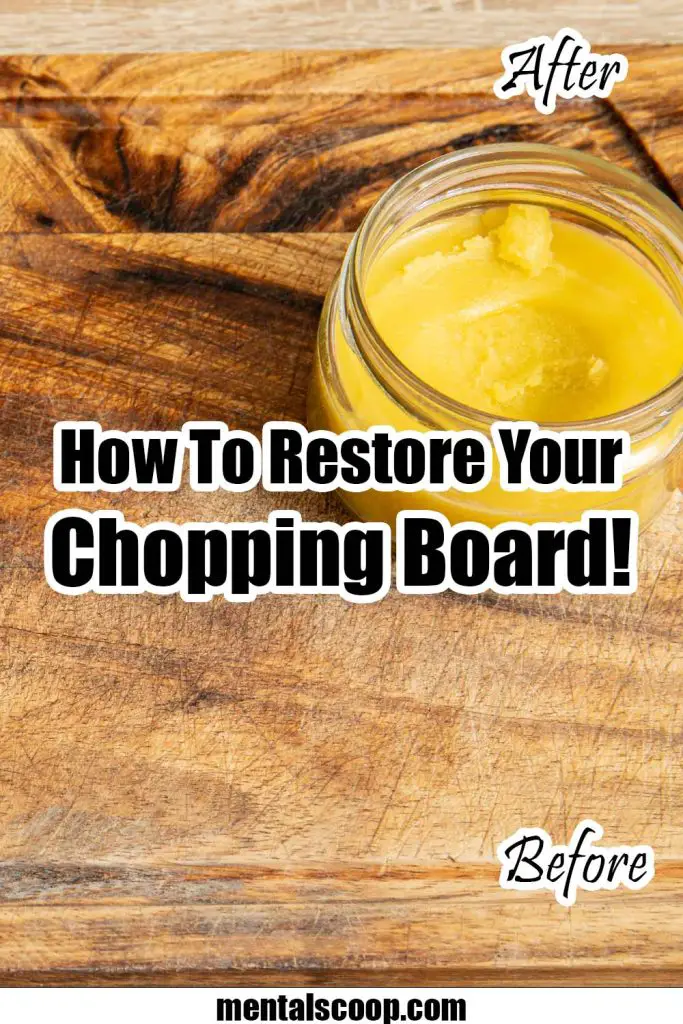How To Restore Your Chopping Board!

In the heart of every kitchen, there resides a humble yet indispensable tool – the chopping board. It’s the silent witness to countless culinary adventures, bearing the scars of onions, tomatoes, and herbs. But fear not!
With a little love and care, your faithful chopping board can be brought back to life, ready to assist you in your next culinary masterpiece. In this comprehensive guide, we’ll take you through the steps to restore your chopping board to its former glory, ensuring both its longevity and your peace of mind.
Assess the Damage
Before embarking on the restoration journey, assess the extent of the damage. Is your chopping board marred by deep cuts, unsightly stains, or unpleasant odors? Identifying the issues will help you choose the appropriate restoration method.
Gather Your Supplies
For this restoration project, you’ll need:
Coarse and fine-grit sandpaper:
To smoothen the surface.
Mineral oil or beeswax:
To nourish and protect the board.
Lemon and salt:
For stain removal and disinfection.
Baking soda:
For stubborn stains and odors.
Vinegar:
An alternative for disinfection.
Microfiber cloth:
For wiping and polishing.
Optional: Food-grade mineral oil and beeswax blend
for a finishing touch.
Sand Away Imperfections
Begin by sanding the chopping board with coarse-grit sandpaper to remove deep cuts and scratches. Follow up with fine-grit sandpaper to achieve a smooth, even surface. This step not only restores the board’s appearance but also ensures a clean surface for your food preparation.
Battle Stains and Odors
For stains, create a paste using lemon juice and salt or baking soda. Gently scrub the stained areas, allowing the natural bleaching properties of lemon and the abrasive texture of salt or baking soda to lift the stains. For persistent odors, wipe the board with a cloth soaked in a mixture of water and vinegar. Let it sit for a few minutes before rinsing and drying thoroughly.
Nourish and Protect
Once your chopping board is stain-free and odorless, it’s time to nourish and protect it. Apply a generous amount of mineral oil or beeswax to the board’s surface. These natural oils penetrate the wood, preventing it from drying out and cracking. Allow the board to absorb the oil for a few hours or overnight, depending on the wood’s absorbency.
Finishing Touches
For an extra layer of protection and a beautiful sheen, consider applying a food-grade mineral oil and beeswax blend. This will enhance the board’s natural colors and provide additional resistance to moisture. Buff the board with a microfiber cloth to bring out its luster.
Congratulations! You’ve successfully restored your chopping board to its former glory. By investing a little time and effort, you’ve not only extended the life of this kitchen essential but also ensured a safe and hygienic environment for your culinary endeavors.
Remember, regular maintenance and cleaning will keep your chopping board in top-notch condition, ready to assist you in creating delightful meals for years to come. So, sharpen those knives and let the chopping begin – your beautifully restored board is ready for action!

More interesting articles you may be interested in reading:

How To Remove A Tree Stump Painlessly
10 Vital Home Maintenance Tasks You’ll Regret If You Forget
See How Much Propane Is Left In A Tank With No Gauge
Thanks for reading and be sure to share this info with your friends using the social share buttons below.
Talking about social stuff, consider liking our Facebook page to keep up to date with our articles. Check out our other articles for more mental scoops!
